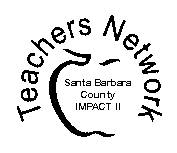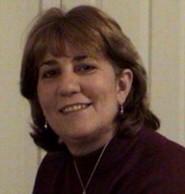The TeachNet Project sponsored with major funding by the AT&T Foundation,
seeks to improve student achievement by providing training, grants, networking and resource sharing to teachers at seven of the Teachers Network affiliates.


www.qad.com
Nutrition I.Q.
How it works:
Nutrition I.Q. Is a comprehensive unit in which Junior High students are provided with opportunities necessary to make wise food choices in their daily living. Students will create their own personal nutrition portfolio beginning by researching three articles in their interest in nutrition and completing article reviews. Students will visit websites which include nutrition quizzes that enable students to evaluate their own body fat analysis, and metabolism. Students will then evaluate restaurant and fast food items for nutrition analysis. In the final portion of the unit, students will create a nutrition plan for one week which they are encouraged to follow and review at weeks' end.
Assessment:
Individual lessons are assigned points as part of a completed portfolio for the entire unit. I assign 200 points for the unit portfolio. These points include: 10 points for a portfolio cover, 20 points for table of contents, 20 points for the evaluation/reflection (What did you think about this unit?), 80 points for the nutrition plan, 30 points for article reviews, 20 points for personal analysis and 20 points for food analysis. Detailed breakdowns of points are included with each lesson.
Standards:
This unit addresses California Health Standards in which students will demonstrate ways they can enhance and maintain their own health and well-being by:
- making healthy food choices in a variety of settings,
- comparing caloric values of food, and
establishing and maintaining healthy eating practices.
Estimated Number of Class Periods:
This unit is fairly flexible in time, depending on the resources available. It can be completed in as few as four (4) class periods with additional student time required for completion of activities. I generally spend two weeks on the unit. If internet access for students is limited, time may need to be increased to accommodate quiz taking. Ideally, the students would have access to a computer lab where many could quiz at the same time.
Materials
and Software used:
This unit can be adapted for a variety of classroom situations. Ideally, all students would have internet accessible computers (possibly in a lab or on a rotational basis). For the reseach portion of the activity, the teacher may have students work in cooperative groups and self-select "Research Specialists" who will retrieve and print articles for the group to review. In situations where internet access is limited to the teacher, information packets may be created by the teacher by downloading articles or nutrition information facts. Body fat analysis may also be calculated from a formula.
Key Words:
Health, Nutrition
The Students:
This unit is designed for seventh or eighth grade students.
Overall Value:
This is a fun and meaningful unit designed for teachers to meet health standards for nutrition education, providing students with an opportunity to evaluate their eating patterns and develop healthy patterns for their life.
Subject Area: Health
Starting Grade Level:
Starting/Ending Grade Level: 7th or 8th GradeTips for the Teacher:
This lesson has been utilized for classes which include students from Resource, Learning Handicapped, and Immersion classes. When classes include students with special needs, groups must be assigned by the teacher in order to support all students' success.
Searching the web for drug information in
class can often result in interference from filtering software.
It is more efficient to provide students with an online hot-list
of resources which are appropriate and acceptable for drug
research. There is a proven list included in the Web Resources
section of the unit.
Ann D'Angelo Orton is a teacher at El Camino Junior High School, in the Santa Maria-Bonita School District, in Santa Maria, California. In her efforts to support beginning teachers, Ann has been a BTSA (California Beginning Teacher Mentor), and a CTAP (California Technology Mentor). Ann and her husband, Michael, authored an integrated technology unit posted with the Telemation Project. The unit, entitled "Eruptions," provides students with opportunities to form email buddies and communicate online with volcanologists. Ann is presently teaching health to seventh grade students in a class called, "Skills for Adolescence." You can reach her at Mikenannie@charter.net .
